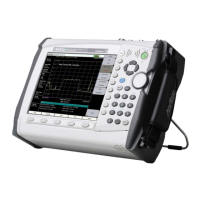
Do you have a question about the Anritsu VNA master and is the answer not in the manual?
| Brand | Anritsu |
|---|---|
| Model | VNA master |
| Category | Measuring Instruments |
| Language | English |
Illustrates and describes the connectors on the MS202xC and MS203xC models.
Outlines recommended preventive maintenance for cleaning the unit and RF connectors.
Specifies the need for RF calibration (OSLT or SSLT) before field measurements for accuracy.
Recommends annual calibration and performance verification by Anritsu service centers.
Provides instructions for replacing the VNA Master battery and charging methods.
Details precautions against Electrostatic Discharge (ESD) damage to the instrument's circuitry.
Guides users on powering on the VNA Master for the first time, including battery and external power usage.
Details the VNA Master's menu-driven interface, hard keys, soft keys, and other controls on the front panel.
Explains how to set parameters using pop-up lists, edit boxes, and dialog boxes.
Details the process of entering text for filenames or other inputs using the instrument's interface.
Explains how to select different measurement modes (e.g., VNA, SPA) using the Mode Selector List Box.
Details how to connect the VNA Master to a local area network using the RJ45 connector and Ethernet settings.
Illustrates how the IP address is assigned when using DHCP for network configuration.
Explains connecting the VNA Master to a PC via USB Type Mini-B for data transfer and software use.
Provides guidance on inspecting, connecting, and disconnecting various types of connectors to prevent damage.
Describes the types of memory used in the MS20xxC VNA Master and associated security issues.
Provides step-by-step instructions for performing a master reset on the MS20xxC instrument.
Explains how to access the System menu for various instrument settings and options.
Details how to use the Power Monitor, including connecting the sensor, zeroing, and measuring high power levels.
Outlines the procedure for saving data (setups, JPEGs) to an external USB memory device with Option 7 enabled.
Explains how Option 7 affects calibration saving and recall, requiring manual save to USB memory.
Discusses memory usage and security issues related to Option 7, particularly concerning internal flash memory access.
Describes the Frequency Blanking feature (Option 7) for hiding sensitive frequency information on the screen.
Provides instructions on managing files, including saving measurements, setups, and JPEG screens.
Explains how to recall measurement and setup files from internal memory or USB flash drives.
Details the procedure for copying files from internal memory to a USB flash drive.
Explains how to delete files and folders from the VNA Master using the Delete submenu and dialog box.
Details the application-specific options for the VNA mode, such as Units, Trace Label, and Time Domain.
Explains the Time Domain options menu for VNA mode, including Reflection Calc and Gate Coupled settings.
Details the application-specific options for the Spectrum Analyzer mode, such as Impedance and Auto Ref Level.
Describes the Measurement Gain Range menu for VNA mode, allowing Auto or Fixed gain settings.
Covers display settings for brightness, color schemes, and blanking the display.
Details the Reset menu options, including Factory Defaults, Master Reset, and Firmware Update.
Explains the Preset menu options for resetting the instrument and saving/recalling setups.
Describes how to perform the Power On Self Test to check system functionality.
Provides instructions for updating the VNA Master's firmware using a USB memory stick.
Guides on installing the GPS antenna and activating the GPS feature on the VNA Master.
Details the GPS menu options, including On/Off, GPS Info, Voltage, and Reset functions.
Explains the GPS Info window, which displays tracked satellites, latitude, longitude, altitude, and UTC.
Explains how GPS coordinates are saved with measurement traces and recalled automatically.
Details Line Sweep Tools (LST) for productivity in analyzing cable, antenna, and PIM traces.
Describes Master Software Tools (MST) for transferring and editing measurements, recommended for Spectrum Analyzer instruments.
Details how to reset the VNA Master to Factory Defaults or perform a Master Reset via menus or from the Off condition.
Explains how to run self tests and interpret results, including troubleshooting steps for failed tests.
Lists and explains operation error messages, including Fan Failure and High Temp Warning.
Lists and explains warning messages specific to the Vector Network Analyzer mode, related to Bias Tee and calibration.
Explains Ethernet configuration, including LAN connection and IP address assignment via DHCP or static IP.
Details how to use DHCP for dynamic IP address assignment, including lease and connection considerations.
Explains how to configure a Static IP address when a DHCP server is unavailable.
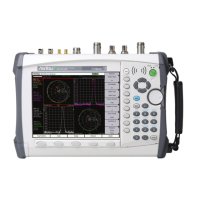
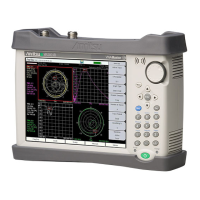
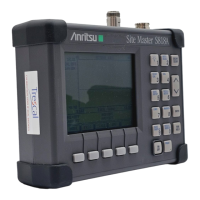
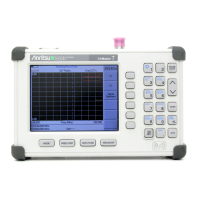
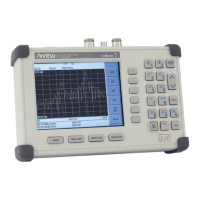





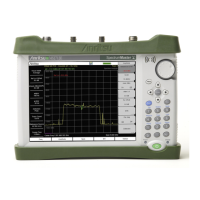

